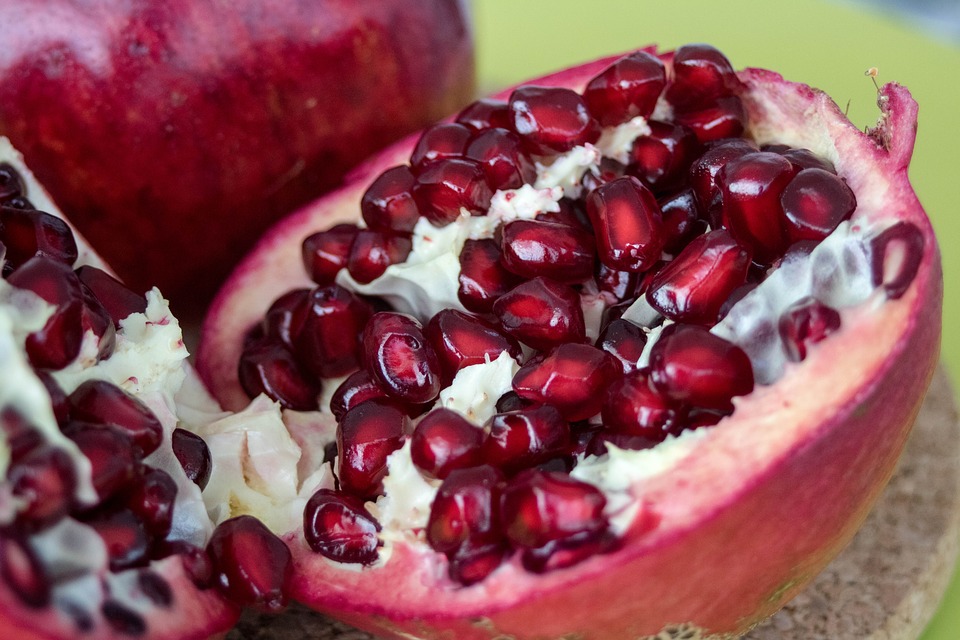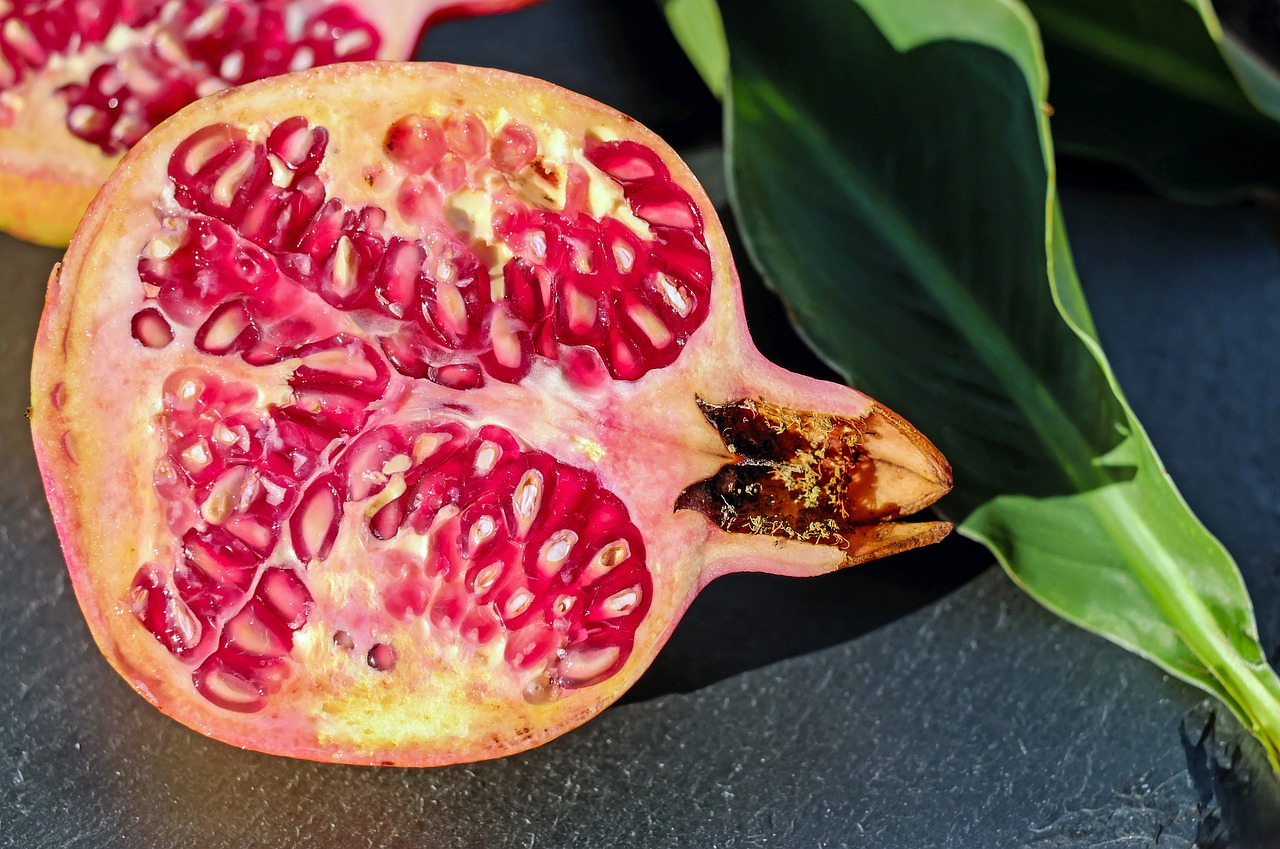Since February is be all about hearts and the color red, the pomegranate seems to be the perfect choice for our fruit of the month.

The pomegranate fruit season for this part of the world is from September though early February . In the U.S., pomegranates tend to grow the best in California and if you’ve had one of these beauties in Utah, chances are it has come from California. Pomegranates typically thrive best in warm, dry climates with cooler winters like those in the Middle East which is where this fruit is originally from and has earned it the nickname “fruit of the desert”.
Appearance:
The fruit itself is leathery, typically pinkish red and filled on the inside with juicy, crunchy seeds also known as arils  which have a delicious, slightly tart flavor. The skin and membranes in a pomegranate can be bitter and I found the best way to cut one is to cut of the top at the blossom end and divide the fruit according to its ridges. A great visual tutorial is found here. Pomegranates are juicy and their red juice will STAIN so be sure to use an apron or old clothing plus a plastic cutting board (it will stain your wood).
which have a delicious, slightly tart flavor. The skin and membranes in a pomegranate can be bitter and I found the best way to cut one is to cut of the top at the blossom end and divide the fruit according to its ridges. A great visual tutorial is found here. Pomegranates are juicy and their red juice will STAIN so be sure to use an apron or old clothing plus a plastic cutting board (it will stain your wood).
Health benefits:
So who cares about pomegranates anyway? I do!!
Holy cow these things are PACKED with antioxidants! The measure of a food’s antioxidants is called the oxygen radical absorbency capacity (ORAC) score ,and the pomegranate  is a fruit with one of the highest.
is a fruit with one of the highest.
Antioxidants work by neutralizing dangerous free radicals in our bodies which can cause all types of diseases including cancer. Research shows that pomegranate extract may inhibit the growth of prostate, colon, breast and lung cancer.
Pomegranates may also help minimize symptoms of depression and help prevent heart disease. It may also help with hot flashes in menopausal women and also looks promising for Alzheimer’s prevention.
Did you know?
Utah has it’s very own variety of pomegranate called the Utah Sweet! Also called the Dixie pomegranate, this variety has a golden colored skin and pink arils. Have you ever seen this type of pomegranate in our area? I’d love to hear your opinion.
It’s always better to eat a fruit or vegetable whole or in a smoothie rather than juiced, so grab a tasty pomegranate and add some seeds to yogurt, cottage cheese or a salad. This is a great and super easy recipe incorporating pomegranate seeds with fennel into a winter salad.
Come by to talk with me in person at Total Health and Fitness for ways to incorporate this and other seasonal, healthy foods into your diet!








